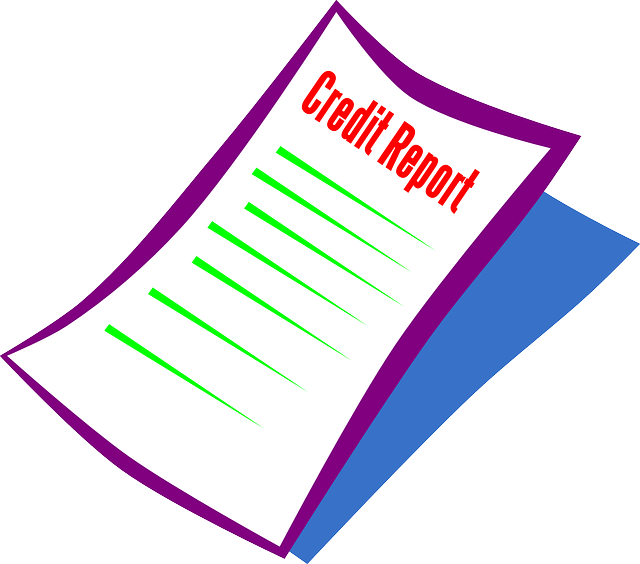How to Get a Credit Score in Canada as a New Immigrant

It’s always a challenge for any Canadian to build up their credit score and ensure that the rates they pay on any credit line, car loan, mortgage, or credit card are as low as they can reasonably get. But when you’re a new Canadian, and especially when you’ve just arrived in Canada with your PR visa in your home country passport, getting a good credit rating can be even more of a challenge.
It’s always a challenge for any Canadian to build up their credit score and ensure that the rates they pay on any credit line, car loan, mortgage, or credit card are as low as they can reasonably get. But when you’re a new Canadian, and especially when you’ve just arrived in Canada with your PR visa in your home country passport, getting a good credit rating can be even more of a challenge.
But fear not. It can be done. It will take some discipline and a little work in order to establish and then raise your credit profile in Canada. Let’s see how!
Get a Canadian Credit Card
Or as they say in the financial world, apply for an unsecured credit card. This is the standard credit card where the financial company issuing the card trusts you to be responsible enough to make the minimum monthly payment and not run up too spending on your card. And at IMMIgroup we’ve covered some of the key offers for immigrants here. However, as a new arrival to the country, you may find that in some cases you aren’t eligible for an unsecured credit card because your credit history is insufficient. It’s a classic chicken-or-egg question, but there is a way out.
Get a Secured Credit Card
A secured credit card is one where you have to pay a deposit up front. Think of it as a down-payment on future spending on that card. In other words, you secure your credit card with an initial payment that provides collateral against the possibility that you may be unable to make payments at some point in the future. It’s a little like starting on the ground floor while others get off on a higher floor, but it’s a way to start building your credit history in Canada. If you merely use your debit card to make all your payments those transactions will not be reported to the credit bureau and will not go towards your credit history. Using a secured credit card ensures that they will.
Get a Cell/Mobile Phone
And when you subscribe to a plan, make sure it’s a post-paid plan, NOT a pre-paid plan. Why you may ask? Because payments to a post-paid plan are a form of consumer credit and are reported to the credit bureaus in Canada. Pre-paid plans are not because you pay then you use up what you’ve already paid for. This is not a metric that credit bureaus are interested in, because it gives them no information about how disciplined a borrower you are.
Get a Car Loan
You will almost certainly have need of a vehicle to get to work or to do daily chores like shopping or taking children to activities, especially if you live in the suburbs. Yes, you can use public transit if you live in a city with a good enough system, but the overwhelming majority of adult Canadians own some type of vehicle. You should too. As well, getting a car loan is another great way to build up your credit history. There are two main ways of obtaining financing for your new car:
- Through a Car Dealer: they arrange for financing through one of several ways:
- A financing division of the automobile manufacturer
- A financial institution – usually a bank or credit union
- An independent finance company – usually specializing in car loans.
- Through a Financial Institution: this way can sometimes offer you somewhat lower interest rates if … you have a good relationship with your bank. Again, we have the catch-22 situation because to enable that good relationship with your bank you need a good credit score, which requires a credit history that goes back a few years.
In other words, you may have to use the Dealer option but you will be building a credit history and as long as you are disciplined about the payments, it will end up improving your credit score and the next time you wish to buy a car, you can go to your bank and get a better rate!
Make your payments on time
This seems like such an obvious thing to do but it can be hard sometimes to maintain your discipline when you have several kinds of debt. That means you have to keep track of your debts be they credit card payments, car loan payments, or any other debt you may have. Remember, your payment history is the principal factor in establishing your credit score. That means you have to carefully monitor your payments due by:
- Always making any payment on time. That can be as simple as knowing the due date on mobile phone post-paid plan and making sure you don’t pay a day late.
- If you can’t pay the full amount, you should always pay the minimum balance due. But please remember that with the high interest rates on Credit Cards, paying only the minimum balance will mean you’ll be paying interest on interest at high rates. A great way to ensure your Credit Card debt keeps growing. This is not a good thing. Trust me. Pay as much you can each month.
- If you think you’ll have trouble making a monthly payment, contact your lender – whether a bank, a car finance company or a mobile provider – and see if you can reschedule some of your payments. This could avoid having a missed payment lower your credit score.
- Even if a debt is in dispute – you disagree with the lender about the amount or conditions of the debt – make the payment anyway. This will keep your credit score intact as you negotiate with the lender.
- Consider setting up automatic payments through your bank. This means you’ll never be late on a payment, as long as you make sure there’s sufficient funds in your account AND as long as you don’t go hog wild with the spending.
Use the 30% or 35% Rule
What that means is you should never actually spend more than 30% (or35%) of your spending limit on, for example, a Credit Card. This shows lenders that you are disciplined in your habits and won’t “max out” your cards and then have trouble meeting your payments at some point in the future. What you need to do is take all your loans and calculate the total spending limit on them. For example, if you have a:
- Credit card with a $4,000 limit
- Line of credit with a $8,000 limit
- Total spending limit is therefore $12,000
- Never spend in total (Credit Card + Line of Credit) more than $4,200 which is 35% of $12,000 (or $3,600 if you’re following the 30% rule).
Increase your Credit Limit
This may seem counter-intuitive but if you apply for an increase in your spending limit AND maintain a disciplined approach to spending – that is, don’t increase your spending merely because you now have a higher credit limit as well as continue to pay your bills on time – then you will be spending a lower percentage of your credit limit. This generally means a higher credit score.
Use your Credit More Often
Another counter-intuitive tactic but as long as you combine it with careful spending, it will improve your credit score. In other words:
- Spend often BUT
- Spend in SMALL amounts AND
- Always pay on time (and in full if possible).
Leave Old Debts Be
When you pay off a debt with a new lower-interest loan you do save on interest payments, but your credit history starts over again since your new debt is treated as just that, a new debt with no credit history. So, you have to balance the interest savings – and remember interest rates in Canada are generally quite low, with the exception of credit card rates, considering inflation is low – against maintaining a credit history by paying off those older debts (on time of course). Since our focus here is on improving your credit history, we would suggest thinking carefully about consolidating all your older debts into a new loan. The longer your history of paying down your debts on time, the better your credit score.
Of course, if the interest savings are substantial and your credit history is fairly good, then by all means go ahead with the debt consolidation.
To Check or Not to Check – That is the Credit Report
How often you ask to see your credit report is a bit of tricky question. As a rule of thumb, you want to check on your credit report at least once a year, to see what your score is and also to correct any errors you might notice. To do this you have to contact the credit bureau of which there 2 ones in Canada:
- Equifax Canada – a credit report is called a “credit file disclosure” at Equifax.
- TransUnion Canada – a credit report is called a “consumer disclosure” at TransUnion.
To order a credit report from either one (by fax or mail) you have to send in:
- Photocopies of 2 pieces of ID – remember to photocopy BOTH SIDES of each ID.
- Provide background information by filling in a form requesting a credit report. There is a different form for each credit bureau. Go here for the Equifax form. Go here for the TransUnion form.
- Remember that for your credit report to be free, you must receive it by mail. If you want to view your credit report online for faster access, you have to pay a fee.
- To order your credit report by phone:
- Call 1-800-465-7166 for Equifax;
- Call 1-800-663-9980 for TransUnion (except Quebec);
- Call 1-877-713-3393 for TransUnion in Quebec.
- Follow the instructions which will include providing personal information including perhaps your SIN.
- If you order by phone your credit report will be sent by mail.
The good news is that when you order a credit report, rather than a bank or other company, it is listed as a so-called “soft hit”. This does not affect your credit history. A “hard hit” when, for example, you apply for a credit card or when a company requests to see your credit report, on the other hand, can indeed affect your credit history. Here’s a few tips to limit the number of hard hits on your credit history:
- Apply for credit only when you really need it.
- When applying for a mortgage or a car loan, try to get quotes from the different financial institutions or finance companies within a 2-week period so the inquiries those companies will then make will be treated as only 1 hard hit by the credit bureaus.
- Try to keep down the number of times you apply for credit.
But again, this is a balancing act. If you have a good payment history and you keep your spending within 30% to 35% of your credit limits, go ahead and apply for that new credit. Just don’t make it a habit.
Ok So What Is a Good Credit Score?
Well, a credit score is generally in the 300 to 900 range. Anything over 660 is considered good and the ideal level you want to achieve is around 800 points. Don’t worry if you don’t get there within a month or two. Take the necessary steps we’ve talked about and you’ll get close enough over the medium term – around a year or perhaps a little more if your initial situation is not too good – to see a real difference in the rates you pay and how easy it is to get credit. Plus, you’ll be a more disciplined spender and hopefully more of a saver. And that’s a good thing.


